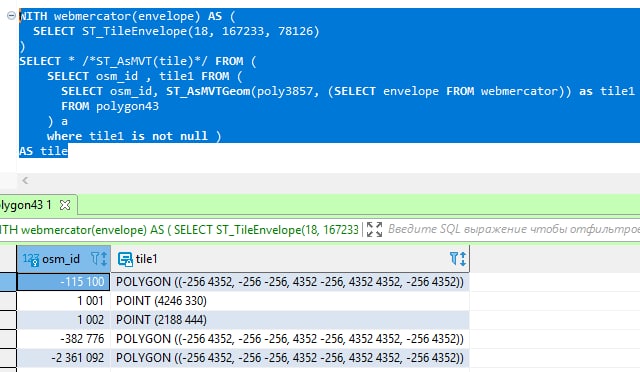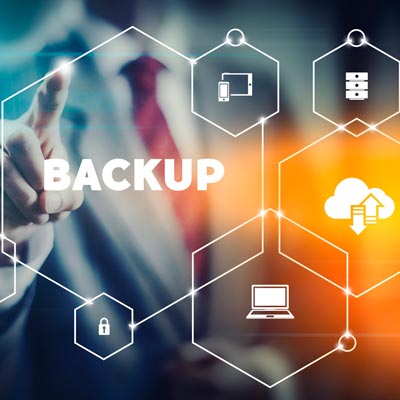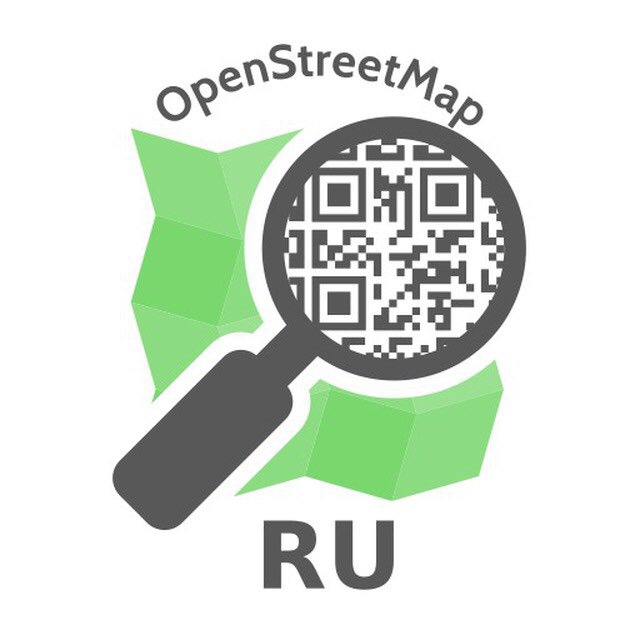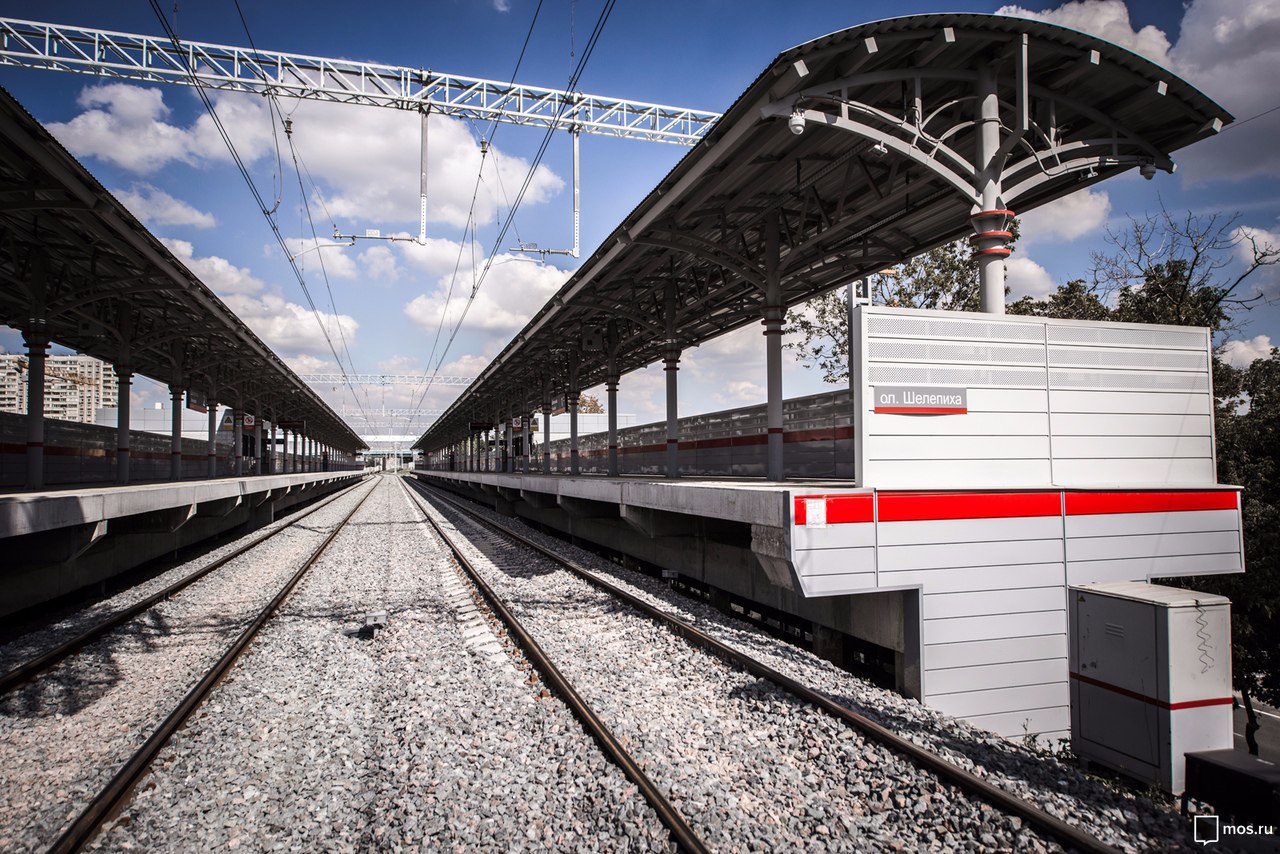SJ
Size: a a a
2021 March 09
то есть этот GDMBR не только не размечен на местности, так еще и внесен в нарушение лицензии... ну дела. Говорю же, в США ОСМ еще младенец
ну не совсем в нарушение лицензии же.
SL
А тут еще прямее про грузовые станции:
The tag railway=yard is mainly used to map a rail yard (aka railway yard or railroad yard), which is... .
This tag has also been used for mapping freight-only stations, which are railway stations without passenger traffic where freight trains are loaded or unloaded, and which are often found in a rail yard.
The tag railway=yard is mainly used to map a rail yard (aka railway yard or railroad yard), which is... .
This tag has also been used for mapping freight-only stations, which are railway stations without passenger traffic where freight trains are loaded or unloaded, and which are often found in a rail yard.
Наоборот косвеннее. В основном для парков, но также стали использовать для грузовых. Ну и опять же, Яндекс-way "есть пассажирские и все остальные" выглядит совсем не айс
SL
По поводу МЦК
i
А ты ещё удивляешься, почему пошла тенденция "годами отточенные фразы" отсебятиной считать
Нет голосования, поэтому кроме голоса самого автора ничего не известно.
l
ну не совсем в нарушение лицензии же.
не совсем, но как-то сомнительно)
f

Кладезь инфы! Хорошо, а как это столбик обозвать, ну вот у меня например столбик N и правильно ли я его присовокупляю в тайл? Совсем запутался... на плитке же может быть много фигур 😳
ну вон же у тебя р43, дор1 и прочие
YZ
К
В совремееном мире отметка на местности уже анахронизм.
Достаточно разметки в навигаторе.
Скоро и дорожные знаки уберут, так как будет достаточно информации, которая будет с компьютере машины. Особенно автопилотам.
Достаточно разметки в навигаторе.
Скоро и дорожные знаки уберут, так как будет достаточно информации, которая будет с компьютере машины. Особенно автопилотам.
Напомнило ситуационистов исследовавших улицы Венеции по карте Парижа
YZ
А можно ещё вопрос, почему не отображаются "точки" на карте? Полигоны кажет, а точек как то нет... они в одной таблице, и полигоны и точки... в pbf они видно что попадают, размер чуть больше чем пустышки, а не отрисовываются... стиля к "точкам" видимо нет
SJ
не совсем, но как-то сомнительно)
я не знаю точно, как это работает, но раз за семь лет существования отношения до сих пор не снесли, возможно, всё нормально
SL
МЦК. Многие из 31 пасс. станции имеют тег station=light_rail, который по вики может употребляться как с railway=station, так и с railway=halt. Сейчас нехорошо, что Андроновка и Ростокино раздвоились (в то время как Белокаменная нет) на "пассажирскую" и "грузовую" части. Это как если какую-нибудь Лобню поделить на грузовую станцию Лобня и о. п. Лобня. Поэтому я бы сделал так:
1. Андроновку и Ростокино оставил по одной точке с тегом railway=station + station=light_rail
2. На те из 31 пункта, которые не станции, навесил railway=halt + station=light_rail (а они действительно с точки зрения ЖД - остановочные пункты: https://sun9-50.userapi.com/c855628/v855628493/ba70d/t-5ipnzv4kk.jpg
3. operator на все 31 пасс. объект поставил operator=ОАО "РЖД";ГУП "Московский метрополитен" (но не на пути, там рулит чисто РЖД) + public_transport=station
4. Теги station=subway с МЦКшных станций убрал.
Тогда по station=light_rail (или public_transport=station) мы сможем получить 31 пасс. станцию МЦК (что и нужно), а по railway=station - 12 грузовых станций (с точки зрения ЖД). Корректно отражен факт, что везде на входах соседствуют логотипы РЖД и ММ - они оба в operator. И никаких станций метро с "Ласточками"
1. Андроновку и Ростокино оставил по одной точке с тегом railway=station + station=light_rail
2. На те из 31 пункта, которые не станции, навесил railway=halt + station=light_rail (а они действительно с точки зрения ЖД - остановочные пункты: https://sun9-50.userapi.com/c855628/v855628493/ba70d/t-5ipnzv4kk.jpg
3. operator на все 31 пасс. объект поставил operator=ОАО "РЖД";ГУП "Московский метрополитен" (но не на пути, там рулит чисто РЖД) + public_transport=station
4. Теги station=subway с МЦКшных станций убрал.
Тогда по station=light_rail (или public_transport=station) мы сможем получить 31 пасс. станцию МЦК (что и нужно), а по railway=station - 12 грузовых станций (с точки зрения ЖД). Корректно отражен факт, что везде на входах соседствуют логотипы РЖД и ММ - они оба в operator. И никаких станций метро с "Ласточками"
M
6ykoff: Подробнее для смертных?)
Что-то про "мой дом"?
Что-то про "мой дом"?
YZ
А можно ещё вопрос, почему не отображаются "точки" на карте? Полигоны кажет, а точек как то нет... они в одной таблице, и полигоны и точки... в pbf они видно что попадают, размер чуть больше чем пустышки, а не отрисовываются... стиля к "точкам" видимо нет

Вот эти гадкие Point в тайл попадают, но почему то полигоны рисуются, а точки не рисуются вообще..😊 Стиль точек не определял, как и полигонов. Но полигоны синим нормально по дефаулту...
i
МЦК. Многие из 31 пасс. станции имеют тег station=light_rail, который по вики может употребляться как с railway=station, так и с railway=halt. Сейчас нехорошо, что Андроновка и Ростокино раздвоились (в то время как Белокаменная нет) на "пассажирскую" и "грузовую" части. Это как если какую-нибудь Лобню поделить на грузовую станцию Лобня и о. п. Лобня. Поэтому я бы сделал так:
1. Андроновку и Ростокино оставил по одной точке с тегом railway=station + station=light_rail
2. На те из 31 пункта, которые не станции, навесил railway=halt + station=light_rail (а они действительно с точки зрения ЖД - остановочные пункты: https://sun9-50.userapi.com/c855628/v855628493/ba70d/t-5ipnzv4kk.jpg
3. operator на все 31 пасс. объект поставил operator=ОАО "РЖД";ГУП "Московский метрополитен" (но не на пути, там рулит чисто РЖД) + public_transport=station
4. Теги station=subway с МЦКшных станций убрал.
Тогда по station=light_rail (или public_transport=station) мы сможем получить 31 пасс. станцию МЦК (что и нужно), а по railway=station - 12 грузовых станций (с точки зрения ЖД). Корректно отражен факт, что везде на входах соседствуют логотипы РЖД и ММ - они оба в operator. И никаких станций метро с "Ласточками"
1. Андроновку и Ростокино оставил по одной точке с тегом railway=station + station=light_rail
2. На те из 31 пункта, которые не станции, навесил railway=halt + station=light_rail (а они действительно с точки зрения ЖД - остановочные пункты: https://sun9-50.userapi.com/c855628/v855628493/ba70d/t-5ipnzv4kk.jpg
3. operator на все 31 пасс. объект поставил operator=ОАО "РЖД";ГУП "Московский метрополитен" (но не на пути, там рулит чисто РЖД) + public_transport=station
4. Теги station=subway с МЦКшных станций убрал.
Тогда по station=light_rail (или public_transport=station) мы сможем получить 31 пасс. станцию МЦК (что и нужно), а по railway=station - 12 грузовых станций (с точки зрения ЖД). Корректно отражен факт, что везде на входах соседствуют логотипы РЖД и ММ - они оба в operator. И никаких станций метро с "Ласточками"
Не скажу за Лобню, но вот есть Крюково и Крюково-Грузовая. Это две честно разные станции.
SL
Не скажу за Лобню, но вот есть Крюково и Крюково-Грузовая. Это две честно разные станции.
Это да, они и территориально в разных местах, равно как Кашира и Кашира-Силовая. Но вот Андроновка точно одна, как тысячи других станций по стране, которые никто не режет на пассажирскую часть и грузовую
f
так и правила вам не предписывают резать
SL
Хотя Википедия наоборот советует не путать. Плюс у этих 31 пункта кода ЕСР нет, в то время как у 12 станций - есть (и оператором у них, по уму, просто РЖД, без метрополитена). Тогда надо разделить оставшиеся, чтобы эти 2 набора не пересекались, и пусть пассажирские 31 штука будут railway=halt + station=light_rail
l
Хотя Википедия наоборот советует не путать. Плюс у этих 31 пункта кода ЕСР нет, в то время как у 12 станций - есть (и оператором у них, по уму, просто РЖД, без метрополитена). Тогда надо разделить оставшиеся, чтобы эти 2 набора не пересекались, и пусть пассажирские 31 штука будут railway=halt + station=light_rail
чувствую, у кого-то (мапс.ми?) навигация по метро отвалится
SL
чувствую, у кого-то (мапс.ми?) навигация по метро отвалится
А тега station=subway на 31 о. п., оказывается и нет, это я видимо в пересадку на метро ткнул. То есть по МЦК вся навигация как по light_rail идет
2021 March 10
SJ
> I have been instrumental in helping to harmonize how OSM tags national/regional/local bike routes in the USA (it was not easy and it took years). The wiki above is the result, along with "USBRS" (search for it or click the link in the "See Also" section, it is a related wiki). If I can help you do the same, please use those two wikis as a starting point, and look at other countries and how they do it, also see our https://wiki.openstreetmap.org/wiki/cycle:network wiki.
>
> > Could you please give me some advice?
>
> If this does not help you or fully answer your questions, please ask more specific questions and I will do my best to answer you. Again, thank you for tracking me down and asking me, that's very OSM-polite!
>
> SteveA
>
> > Could you please give me some advice?
>
> If this does not help you or fully answer your questions, please ask more specific questions and I will do my best to answer you. Again, thank you for tracking me down and asking me, that's very OSM-polite!
>
> SteveA
On 2021-03-09 19:54:09 UTC stevea wrote:
> On 2021-03-09 19:28:23 UTC broadway_lamb wrote:
>
> > Thank you for such a detailed answer!
> >
>
>
> You are welcome!
>
> > My main question is, if a route is not marked, how do we distinguish between "what some people feel like is a good bicycle ride" and a route that is worth mapping like GDMBR?
> >
>
> That is a question that rides the edge between what we (in the USA, by no means "the only correct method") call simply "what some people feel like a good bicycle route" and what we have in the USA which we call "quasi-national routes." These are routes which ARE signed, they are thousands (or hundreds) of kilometers long, and so they are so significant in the world of bicycle riding that they "rise to the level of a national route" and we call these quasi-national bicycle routes. However, because the USA has only a single national bicycle network (the numbered USBRS, "national routes," this system/network is still developing over decades and only about 30% complete), and the three or four routes which we consider to be "quasi-national" are so very major and lengthy (compared to local or regional / statewide) routes, we had to make some decisions.
>
> The decisions are that there is only one national network (numbered, official, signed, government-approved): the USBRS and any other routes which are "so large as to be national in scope" (the three or four quasi-national routes), these cannot be numbered nor use the same kinds of signs, they MUST be signed, and we distinguish them further with the cycle_network key (values are US:US for USBRS routes and US for quasi-national routes, as each of them is "independent" of any other route and are not members of a "system of routes").
>
> We are quite firm that if a route is not signed, AND it is not published by a government, it falls down to the category of "not a route," and should not get any relation tagged type=route, route=bicycle and network=* tags (where * is either ncn, rcn or lcn — see our wiki about bicycle and bicycle routes to understand how to use these). The idea in being strict like this is that ONLY government routes and SIGNED routes will get lcn, rcn, ncn tags. Otherwise, everything else is a "free for all" and you would have a crazy "whatever we feel like is a good bike ride" appear in OSM as routes and that isn't correct.
>
> In the USA, we DO have people who want to put these ("a good bike ride") somewhere on the Internet, there are web sites like www.RideWithGPS.com that allow you to upload and manage "private" routes that are not "official" (government or signed or both) routes. Please read the wiki I have pointed you towards and you will get a flavor for some of the issues involved and how careful you must be for good rules to be established in a country, otherwise, OSM becomes a "free for all" mess of bike routes which are "unofficial" and "we feel like this a good bike ride."
>
> > For example, if a route similar to GDMBR (but in Russia) has a website, a dedicated team of enthusiasts maintaining it, and is not copyrighted, what other conditions should it satisfy in order to be worth mapping?
>
> On 2021-03-09 19:28:23 UTC broadway_lamb wrote:
>
> > Thank you for such a detailed answer!
> >
>
>
> You are welcome!
>
> > My main question is, if a route is not marked, how do we distinguish between "what some people feel like is a good bicycle ride" and a route that is worth mapping like GDMBR?
> >
>
> That is a question that rides the edge between what we (in the USA, by no means "the only correct method") call simply "what some people feel like a good bicycle route" and what we have in the USA which we call "quasi-national routes." These are routes which ARE signed, they are thousands (or hundreds) of kilometers long, and so they are so significant in the world of bicycle riding that they "rise to the level of a national route" and we call these quasi-national bicycle routes. However, because the USA has only a single national bicycle network (the numbered USBRS, "national routes," this system/network is still developing over decades and only about 30% complete), and the three or four routes which we consider to be "quasi-national" are so very major and lengthy (compared to local or regional / statewide) routes, we had to make some decisions.
>
> The decisions are that there is only one national network (numbered, official, signed, government-approved): the USBRS and any other routes which are "so large as to be national in scope" (the three or four quasi-national routes), these cannot be numbered nor use the same kinds of signs, they MUST be signed, and we distinguish them further with the cycle_network key (values are US:US for USBRS routes and US for quasi-national routes, as each of them is "independent" of any other route and are not members of a "system of routes").
>
> We are quite firm that if a route is not signed, AND it is not published by a government, it falls down to the category of "not a route," and should not get any relation tagged type=route, route=bicycle and network=* tags (where * is either ncn, rcn or lcn — see our wiki about bicycle and bicycle routes to understand how to use these). The idea in being strict like this is that ONLY government routes and SIGNED routes will get lcn, rcn, ncn tags. Otherwise, everything else is a "free for all" and you would have a crazy "whatever we feel like is a good bike ride" appear in OSM as routes and that isn't correct.
>
> In the USA, we DO have people who want to put these ("a good bike ride") somewhere on the Internet, there are web sites like www.RideWithGPS.com that allow you to upload and manage "private" routes that are not "official" (government or signed or both) routes. Please read the wiki I have pointed you towards and you will get a flavor for some of the issues involved and how careful you must be for good rules to be established in a country, otherwise, OSM becomes a "free for all" mess of bike routes which are "unofficial" and "we feel like this a good bike ride."
>
> > For example, if a route similar to GDMBR (but in Russia) has a website, a dedicated team of enthusiasts maintaining it, and is not copyrighted, what other conditions should it satisfy in order to be worth mapping?
>




